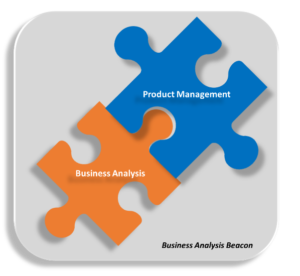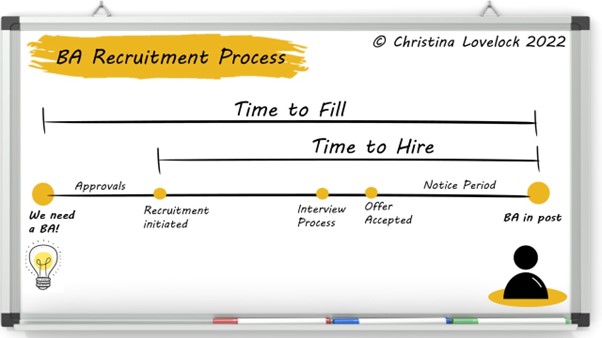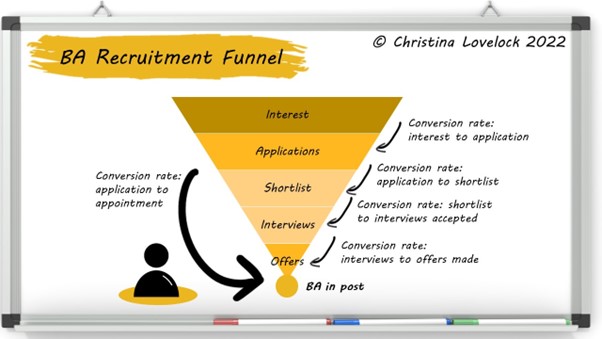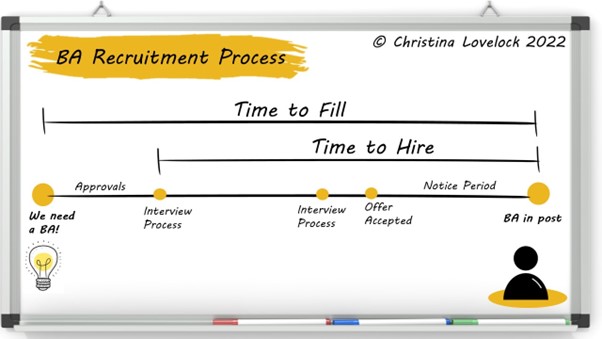Best of BATimes: Approaches for Being a Lead BA
You’ve worked your way up the BA ladder – started as a Junior BA, then a BA, then a Sr. BA, and now you’re a Lead BA on a project working with other BAs. What do you do? This article focuses on some of the Do’s and Don’ts of being a Lead BA. Some of it is science and some of it is art.
Requirements Governance:
1. Who do you take direction from your PM or your BA Manager:
The first place to start as a Lead BA is establishing your own personal Requirements Governance. Who do you provide status updates to and who do you take direction on requirements from – PM or your BA Manager? The scenarios I’ve encountered are:
- You as the Lead BA take your BA requirements direction from the PM and provide status updates to your BA Manager.
- You as the Lead BA take your BA requirements directly from your BA Manager and provide status updates to your PM.
- The third and most often scenario is where both the PM and your BA Manager are of the opinion that you take requirements direction from them and provide status updates to the other.
Tip: Right at the beginning of the project start the conversation with your BA Manager and clearly establish the relationship you’ll have with him or her and with the PM (in my experience coaching BAs too many Lead BAs don’t have the conversation upfront and then find themselves in a bind when scenario C) above becomes an issue during the project itself). If the answer is taking your requirements direction from them, set up a short meeting with your BA Manager and the PM to establish this relationship as PMs generally don’t like that arrangement, and it’s best to get them to discuss it face to face. If the answer is taking your requirements direction from the PM, then simply follow-up the meeting with a confirmation email to your BA Manager and just let your PM know that you’re effectively going to report to them and take, where appropriate, BA approach direction from them.
Advertisement
2. Establish your role as Lead BA on the BA team:
Make sure it’s clear to the BAs you’ll be leading that you are the Lead BA, and they will work with you in that capacity. A couple of ways to communicate this:
- Ensure you’re called out on the project governance as the Lead BA and ensure the BAs you’ll be leading review the project governance
- Where you’re taking your Requirements direction from your BA Manager have them send out an email to the BAs you’ll be leading that you’re the lead and that you’ll be guiding the approach etc. to the Requirements deliverables
3. Start by learning about your BAs:
At the beginning you’ll need to establish how experienced the BAs are with eliciting, documenting, and analyzing requirements, how familiar they are with the project subject matter, etc./ by scheduling quick little chats with the BAs you’ll be working with
- If you’re dealing with Sr. BAs with lots of experience, then your focus with them will be on making sure things are going smoothly and that they working to the timelines for their requirements work packages; You can give them fairly large and complex requirements work packages
- If you’re dealing with more Jr. BAs then you will be in a more guidance/ mentoring mode – periodically reviewing their requirements and providing feedback, mentoring on approach to different types of requirements such as documenting process flows and business rules, etc.; Initially limiting the scope of their work packages to small well-defined pieces of requirements; have little chats with them about how things are going
4. Develop a view of the requirements work packages:
Typically, a group of BAs is assigned to a project because the project is complex and there are multiple “groups/ categories” of requirements that need to be created to deliver the scope of the project. At the outset understand the drivers and objectives of the project and establish a view of the requirements work packages. Some examples of this are:
a. Achieving compliance with regulations or another compliance-related purpose:
-
- You may need to look at work packages focused on complying with different sections of the regulations
- If the compliance covers multiple departments or Lines of Business (LOB) you may need to focus on requirements for each department/ LOB to comply with the regulations
b. Developing and implementing a large technology system or platform:
-
-
- You may need to look at requirements work packages focused around different groups of users with the system – for example if it’s a workflow system you likely have work packages for customer-facing components, back-office-facing components, etc.
- You may need to look at requirements work packages focused on different functional features. For example, a customer-facing platform for a direct investing platform may consist of trading-related features, viewing account holdings, researching different securities, etc.
-
5. Managing the requirements work packages:
a. Establish a view of the project timelines with respect to the requirements work packages based on their complexity etc. I prefer a matrix like this to do so (using the direct investing platform as an example) based on the requirements lifecycle – plan, elicit, analyze, document, get sign-off (note do this in Excel or Project to track progress, etc.)
| Plan | Elicit | Analyze | Document | Sign-Off | |
| Trading requirements | 01/01/22 to 10/01/22 | 10/01/22 to 25/01/22 | 25/01/22 to 02/02/22 | 02/02/22 to 16/02/22 | 16/02/22 to 28/02/22 |
| Security Research requirements | 01/01/22 to 10/01/22 | 10/01/22 to 25/01/22 | 25/01/22 to 02/02/22 | 02/02/22 to 16/02/22 | 16/02/22 to 28/02/22 |
| View account holdings requirements | 01/01/22 to 10/01/22 | 10/01/22 to 25/01/22 | 25/01/22 to 02/02/22 | 02/02/22 to 16/02/22 | 16/02/22 to 28/02/22 |
b. Based on what you learned about the BAs you’re leading assign them to different work packages – and monitor their progress on their work packages against the. I’ve found the best way to keep track of this is using a matrix like this that I update on a weekly basis:
Legend:
P – Plan, E- Elicit, A- Analyze, D- Document, S- Signoff
| BA1 | BA2 | BA3 | |
| Trading requirements | P – Jan. 1/22 | ||
| Security Research requirements | P – Jan. 1/22 | ||
| View account holdings requirements | P – Jan. 1/22 |
With these 2 matrices, you can keep track of who’s doing what and how they are doing against the target dates so you can provide status reports to the project team as required.
6. Monitoring progress and connecting the BAs as a team:
The most effective approach that I’ve found to monitor the progress of my BAs is to hold weekly meetings – with a twist. Most people just do a status check-in during their weekly meetings – how are you progressing against your timelines. I believe that weekly meetings are a good chance for the BAs to inform and help one another. I encourage them to talk about challenges they are having – someone else in the team may have encountered this and have a solution/ approach to tackling it. I encourage them to talk about effective approaches that they’ve found to doing things that may be helpful to other members of the team. Finally, I ask each BA to give a brief overview of the requirements they are working on. As most projects with a BA team have a common goal – by talking about requirements it will quite often identify synergies or conflicts between requirements/ work packages that will help move the project forward more efficiently.
Conclusion:
Hopefully, these approaches will help you become a more effective BA Lead. There are lots more approaches and in future articles, I may expand on them.













